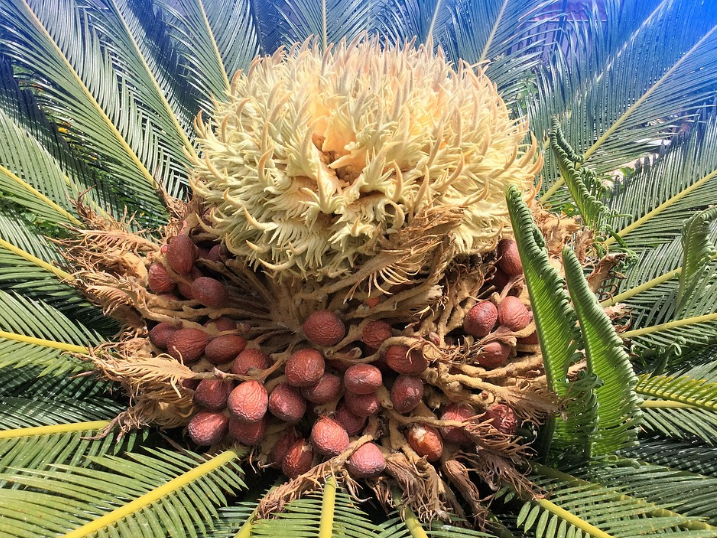
Cryptogams
A cryptogam is a plant that reproduces by spores without flowers or seeds. The best-known groups of cryptogams are algae, lichens, Hornworts, Liverworts, mosses and ferns. It also includes non-photosynthetic organisms traditionally classified as plants, such as fungi, slime molds and bacteria.
Characteristics Of Cryptogams
- Cryptogams are group of plants that have no true flowers or seeds and that reproduce by spores as in the ferns, mosses, fungi and algae.
- In cryptogams, reproductive organs are not visible and plants reproduce by formation of spores and do not bear seeds.
- Cryptogams can be further classified into Thallophyta, Pteridophyta and Bryophyta.
- The plant structure of cryptogams is not well-differentiated into stem, leaves and roots.
- The main mechanism of reproduction of cryptogams is the production of spores.
- Cryptogams lack a well-developed vascular system for transport of water, dissolved minerals and conduction of food substances to all parts of the plant.
- Cryptogams require external water for fertilization.
- Cryptogams are considered to be less evolved plants.
- Cryptogams do not have seeds.
- Examples of cryptogams include algae, mosses, liverworts, hornworts and ferns.
Phanerogams
Phanerogams are plants comprising those having reproductive organs, flowers or seeds. , in phanerogams, reproductive organs are clearly visible and the plant reproduces by production of seeds where seeds germinate into new plants. Examples include: Conifers, cycads, mango, gnetophytes, banyan dicot and Ginko.
Characteristics Of Phanerogams
- Phanerogams are plants comprising those having reproductive organs, flowers or seeds.
- In phanerogams, reproductive organs are clearly visible and the plant reproduces by production of seeds where seeds germinate into new plants.
- Phanerogams can be further classified into gymnosperms and angiosperms.
- The plant structure of phanerogams is well differentiated and possesses well-developed stem, leaves and roots.
- The main mechanism of reproduction is the production of gametes.
- Phanerogams have a well-developed vascular system for transport of water, dissolved minerals and conduction of food substances to all parts of the plant.
- Phanerogams do not require external water for fertilization.
- Phanerogams are considered to be highly evolved plants.
- Phanerogams are seed bearing plants.
- Examples of phanerogams include conifers, cycads, mango, gnetophytes, banyan dicot and Ginko.
Also Read: Difference Between Bryophytes And Pteridophytes
The Difference Between Cryptogams And Phanerogams In Tabular Form
| Basis of Comparison | Cryptogams | Phanerogams |
| What are they | Cryptogams are group of plants that have no true flowers or seeds and that reproduce by spores as the ferns, mosses, fungi and algae. | Phanerogams are plants comprising those having reproductive organs, flowers or seeds. |
| Reproduction | Reproductive organs are not visible and plants reproduce by formation of spores and do not bear seeds. | Reproductive organs are clearly visible and the plant reproduces by production of seeds where seeds germinate into new plants. |
| Further Classification | Can be further classified into Thallophyta, Pteridophyta and Bryophyta. | Phanerogams can be further classified into gymnosperms and angiosperms. |
| Plant Structural Differentiation | The plant structure of cryptogams is not well-differentiated into stem, leaves and roots. | The plant structure of phanerogams is well differentiated and possesses well-developed stem, leaves and roots. |
| Mechanism Of Reproduction | The main mechanism of reproduction of cryptogams is the production of spores. | The main mechanism of reproduction is the production of gametes. |
| Vascular System | Lack a well-developed vascular system for transport of water, dissolved minerals and conduction of food substances to all parts of the plant. | Have a well-developed vascular system for transport of water, dissolved minerals and conduction of food substances to all parts of the plant. |
| Fertilization | Require external water for fertilization. | Do not require external water for fertilization. |
| Evolution | Are considered to be less evolved plants. | Are considered to be highly evolved plants. |
| Seeds | Do not have seeds. | Are seed bearing plants. |
| Examples | Examples of cryptogams include algae, mosses, liverworts, hornworts and ferns. | Examples of phanerogams include conifers, cycads, mango, gnetophytes, banyan dicot and Ginko. |
Summary
What is the main difference between Cryptogams and Phanerogams?
In cryptogams, reproductive organs are not visible and plants reproduce by formation of spores and do not bear seeds. Conversely, in phanerogams, reproductive organs are clearly visible and the plant reproduces by production of seeds where seeds germinate into new plants.